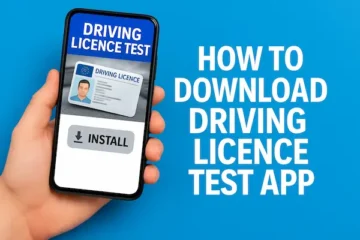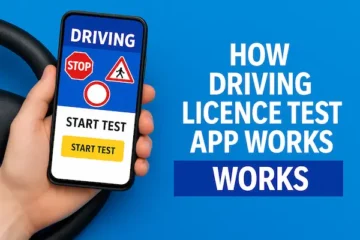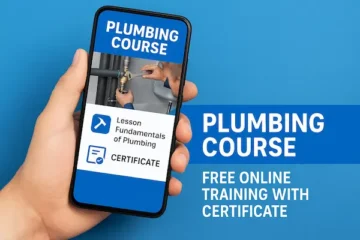Event Organization – 7 Tips for Successful Planning
Planning an event involves various elements that can determine its success. Seven essential tips can guide anyone through the complexities of event organization, ensuring a smooth experience from start to finish. With the right strategies in place, hosts can create memorable events that leave a lasting impression.
Understanding the importance of each step in the planning process is crucial. From setting a clear objective to managing logistics, attention to detail is what sets successful events apart. By focusing on these key areas, organizers can effectively engage participants and achieve their goals.
Whether it is a corporate gathering, wedding, or community festival, these tips provide valuable insights for anyone looking to enhance their event planning skills. Emphasizing preparation and adaptability will lead to satisfying outcomes and happy attendees.
Understanding Your Target Audience
Recognizing the target audience is crucial for successful event organization. By identifying demographics and assessing preferences, planners can tailor experiences that resonate.
Identifying Audience Demographics
Demographics provide vital information about the audience. Key factors include age, gender, income, education, and location. Understanding these elements helps in creating targeted marketing strategies.
For instance, a corporate event may attract professionals in their 30s and 40s, while a music festival could appeal to younger audiences.
To gather demographic data, planners can use surveys, social media analytics, and ticket purchase information.
Additionally, examining past events can yield insights into who attended and what attracted them.
Assessing Audience Preferences
Equally important is grasping the audience’s preferences. This involves understanding interests, values, and motivations to enhance engagement.
Conducting surveys is an effective method for gathering feedback on preferred formats, speakers, and activities.
Using platforms such as Google Forms can make data collection straightforward.
Additionally, observing trends in social media can provide clues about popular topics and themes among the target audience.
Incorporating this feedback into event planning increases relevance and ensures a positive attendee experience.
Setting Clear Objectives
Setting clear objectives is essential for successful event organization. Defining specific goals and establishing metrics for evaluation guide planning and execution effectively.
Defining Event Goals
To define event goals, one must consider the purpose of the event. This could include increasing brand awareness, generating leads, or promoting a product launch.
Goals should be SMART: Specific, Measurable, Achievable, Relevant, and Time-bound. For example, rather than stating, “I want more attendees,” a clear goal might be, “Attract 300 attendees over two days.”
Engaging stakeholders is critical in this phase. Gathering input from team members, sponsors, and potential attendees can refine the goals. Documenting these objectives helps in maintaining focus throughout the planning process.
Measuring Success
Measuring success involves setting benchmarks that align with the defined goals. This can include tracking attendee feedback, analyzing participation rates, and monitoring social media engagement.
Using tools like surveys or analytics software allows for quantitative measurement. For instance, if the goal was to achieve a 20% increase in leads, tracking the number of new contacts made during the event is essential.
Establishing a post-event evaluation strategy is crucial. This should include reviewing the data collected and assessing whether the objectives were met. Adjustments for future events can be based on these insights, ensuring continuous improvement.
Choosing the Right Venue
Selecting a venue is a crucial step in event planning. It impacts everything from guest experience to logistical arrangements. Two primary considerations are venue size and capacity, as well as location accessibility.
Venue Size and Capacity
The venue’s size must align with the expected number of attendees. An undersized venue can create overcrowding, leading to discomfort and dissatisfaction. Conversely, a venue that is too large may feel empty, which can dampen the atmosphere.
When assessing capacity, consider the following:
- Seating Arrangement: Different layouts (theater, classroom, banquet) affect how many guests can fit.
- Safety Regulations: Ensure the venue complies with local fire and safety codes.
- Amenities: Evaluate if the space can accommodate necessary equipment (AV systems, stages).
Choosing appropriately sized venues enhances the guest experience, allowing for a comfortable and engaging event.
Location Accessibility
Access to the venue is imperative for guest attendance. A convenient location ensures higher turnout rates, while difficult-to-reach venues can deter participation.
Key factors to assess include:
- Proximity to Public Transport: Venues near bus and train stations are easier for guests.
- Parking Availability: Adequate parking spaces or nearby options are essential for those driving.
- Accessibility Features: Ensure the venue is compliant with ADA standards, facilitating access for individuals with disabilities.
A well-located venue can significantly enhance participation and overall event success.
Designing a Memorable Event Experience
Creating a memorable event experience relies on a well-structured program and interactive components that engage attendees. These elements foster connections and enhance overall enjoyment.
Creating an Engaging Program
A captivating event program maintains audience interest and encourages participation. Focus on themes that resonate with attendees. Consider the following components:
- Keynote Speakers: Select speakers with compelling stories or expertise directly related to the event theme.
- Breakout Sessions: Offer diverse sessions that cater to varying interests. This variety allows participants to customize their experience.
- Networking Opportunities: Allocate time for networking to facilitate connections among attendees. This can be in the form of structured networking events or casual meet-and-greets.
Promote the agenda in advance to build excitement. Use engaging visuals and clear descriptions to convey what attendees can expect.
Incorporating Interactive Elements
Interactive elements elevate event experiences by involving attendees actively. Consider including:
- Q&A Sessions: Encourage audience questions during or after presentations. This fosters engagement and addresses participants’ interests directly.
- Live Polling: Use interactive technology to gather real-time feedback on topics or preferences. This involves attendees and informs adjustments throughout the event.
- Workshops: Hands-on workshops allow participants to apply concepts in real-time. This practical approach reinforces learning and retention.
Integrating technology, such as event apps or social media engagement, can amplify interaction. Incorporate games or challenges related to the event theme for added excitement.
Leveraging Marketing and Promotion
Effective marketing and promotion are essential for the success of any event. By strategically utilizing social media channels and developing targeted promotional materials, event organizers can significantly enhance visibility and audience engagement.
Utilizing Social Media Channels
Social media is a powerful tool for promoting events. Platforms such as Facebook, Instagram, and Twitter allow organizers to reach a large audience quickly.
- Create Event Pages: Use Facebook Events to generate interest and build a community.
- Engage with Followers: Regularly post updates, teasers, and behind-the-scenes content to maintain excitement. Responding to comments encourages interaction and foster engagement.
- Utilize Hashtags: Implement event-specific hashtags to increase discoverability.
- Collaborate with Influencers: Partnering with local influencers can widen the reach. They can promote the event to their followers, exposing it to new audiences.
Developing Promotional Materials
Promotional materials should effectively communicate the event’s value. This includes both online and offline content.
- Create Eye-Catching Flyers: Design flyers that highlight key details and benefits. Distribute them in strategic locations, such as community centers and cafes.
- Digital Marketing Collaterals: Utilize promotional graphics for online ads, email newsletters, and social media posts. These should align with the event’s branding.
- Brochures or Booklets: For larger events, consider comprehensive brochures. They can offer detailed information about schedules, speakers, and activities.
- Press Releases: Draft and distribute press releases to relevant media outlets to gain additional visibility.
These tactics, when executed effectively, can energize an event’s marketing efforts and attract a larger audience.
Managing Logistics and Operations
Effective logistics and operations are crucial for successful event management. Attention to detail can significantly affect the attendee experience.
Key Considerations:
- Venue Selection: Choose a location that meets capacity needs and accessibility requirements. Consider parking availability and transportation options.
- Timeline Management: Create a detailed timeline for each phase of the event. Include deadlines for vendor bookings, marketing promotions, and setup.
- Vendor Coordination: Establish clear communication with all vendors, such as catering, audio-visual, and decorators. Regular check-ins can prevent last-minute surprises.
- Budget Tracking: Monitor expenses against the budget throughout the planning process. Adjustments may be necessary to stay on track.
- Attendee Engagement: Plan ways to engage attendees before and during the event. This could include interactive activities, networking opportunities, or guest speakers.
- Emergency Preparedness: Develop contingency plans for potential issues, such as bad weather or technical difficulties. Ensure staff is trained to handle emergencies.
- Post-Event Evaluation: After the event, gather feedback from attendees and vendors. This information is valuable for improving future events.
By focusing on these logistics and operations aspects, organizers can enhance the overall experience and ensure the event runs smoothly.






